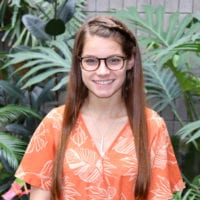
Estimation of hoverfly body size: using traits to predict body mass
Hover flies are pollinating insects, which makes them significant as pollination directly impacts agricultural output and ecosystem function. Recent studies have shown that many flies have been in decline, causing concern and stimulating research in effort to understand and ameliorate these declines. However, because most pollinator conservation efforts have mainly focused on bees, there is an overall lack of knowledge regarding hover flies. A key step in building greater knowledge is to gather and analyze trait data. In bees, intertegular distance is known to correlate with dry body mass; however, no such relationship between body measurement and mass is known for hover flies. The goal of this project was to determine a body size metric that could serve as a proxy for hover fly body mass, a key trait that could be used in a myriad of other applied studies. We collected 233 hover flies from the Finger Lakes Region of New York. After drying the flies in an oven, we took dry body mass measurements, and also measured the head width, thorax length, and wing length of each hover fly. We then analyzed relationships between the dry body weight and each of the three length measurements. We found that body weight had a significant positive correlation with each of the three measurements of head width, thorax length, and wing length. However, the relationship was not linear, and instead body size could be accurately estimated from each of body measurement by a power law. Of the three measurements, wing length is the most predictive of body mass. These findings not only allow us to make generalizations of body size based on key characters even in broken or incomplete specimens, but also contribute to a database of average species size and ranges for species. making it an identifiable trait and facilitating further research on hover flies. Understanding how body size can predict species responses to environmental traits is an important next step to minimize hover fly declines.
My Experience
This summer here in the McArt lab has given me so much professionally, personally, and academically. This was my first real exposure to research and I learned much more than I expected to, from field and lab techniques, to what it’s like to be a part of a research team. I also got to experience working closely with a mentor, which let me have a closer look at what pursuing a career in research fields entails. Through BTI, I was able to attend seminars and other activities which even further exposed me to the world of research and its significance. Everyone I interacted with was encouraging, helpful, and genuinely interested in what you had to say, it’s really a wonderful environment. This internship was an amazing learning experience, in more ways than one, and has definitely helped solidify my interest in science. I believe this summer experience has shaped me as an individual not only in terms of my academic and professional future, but also my personal interests.
